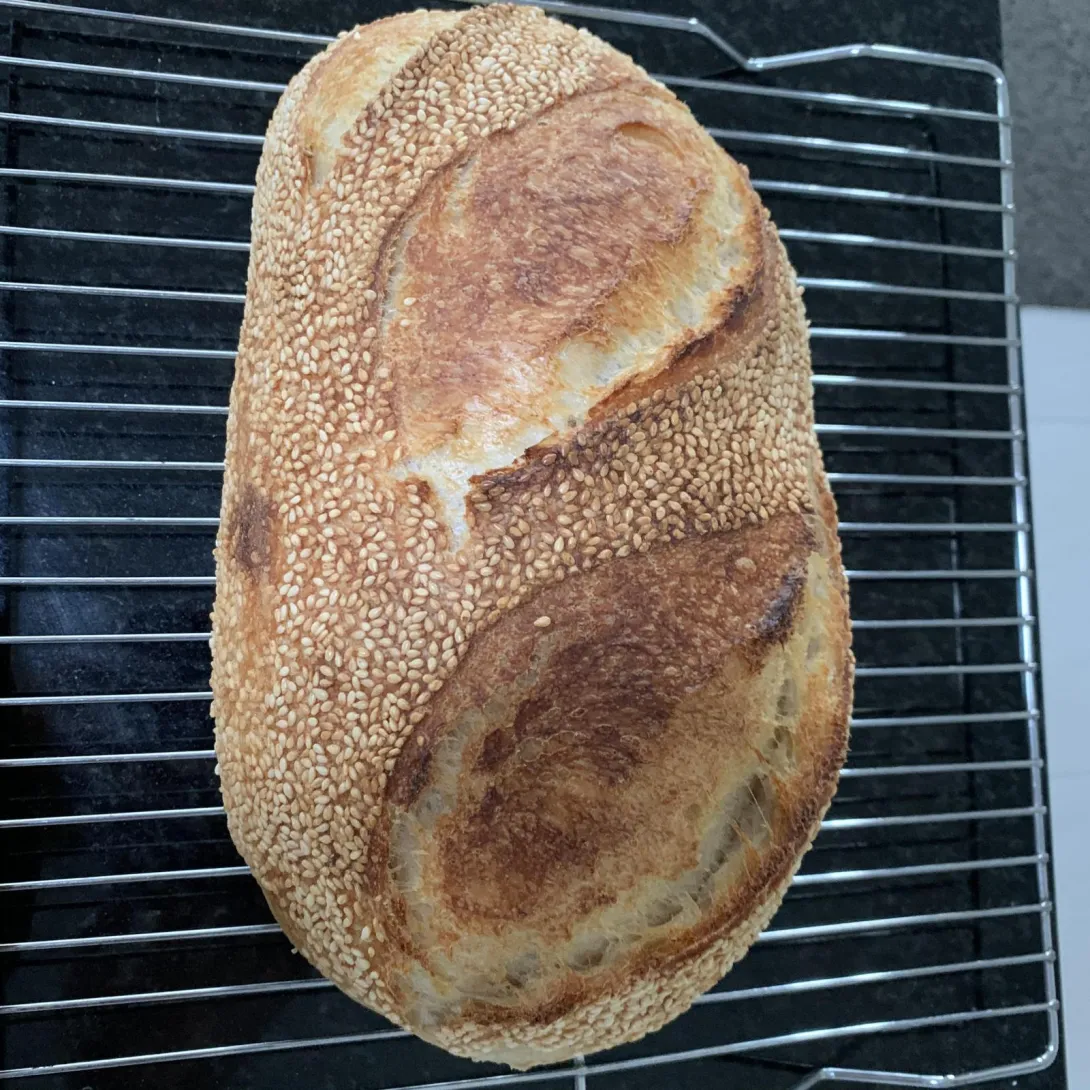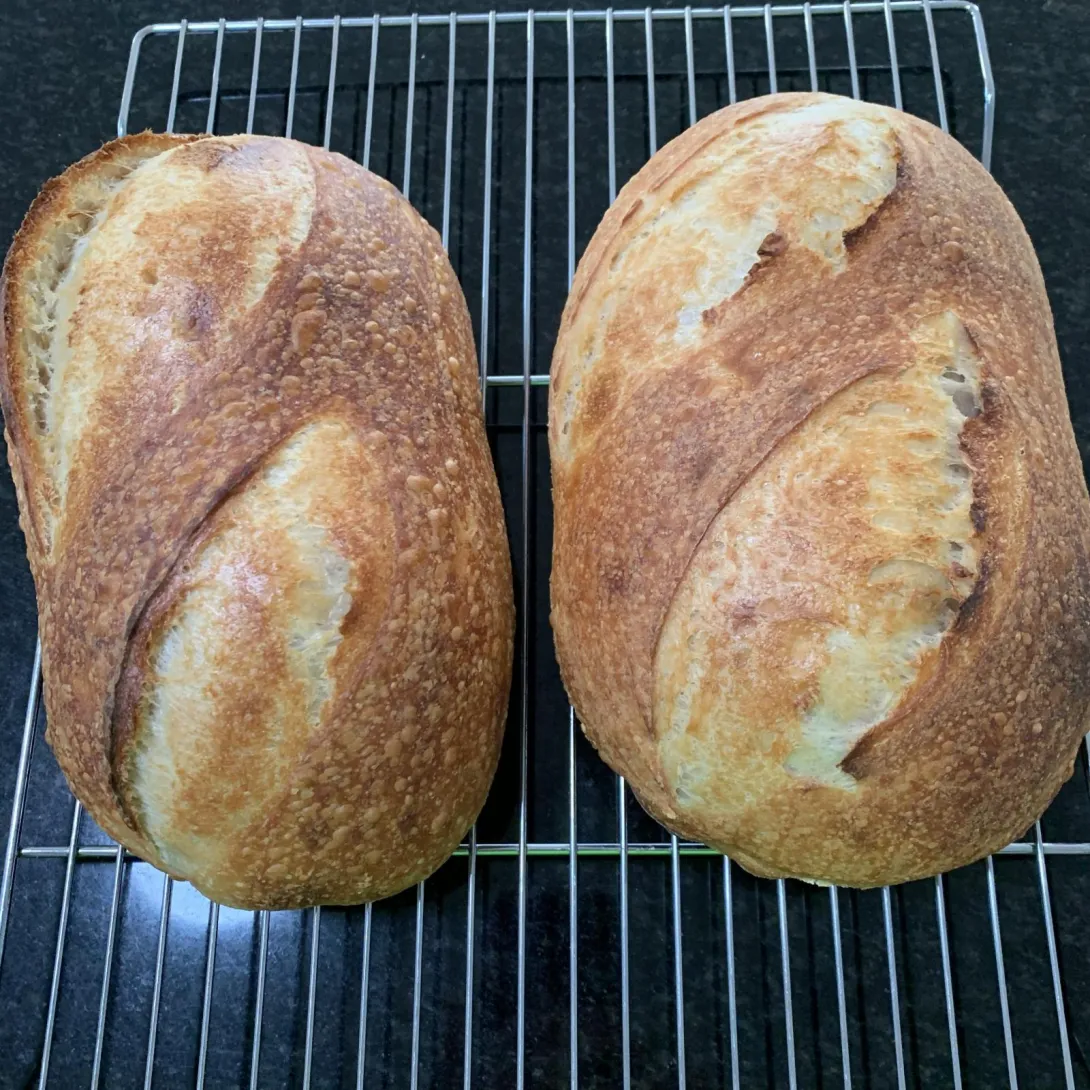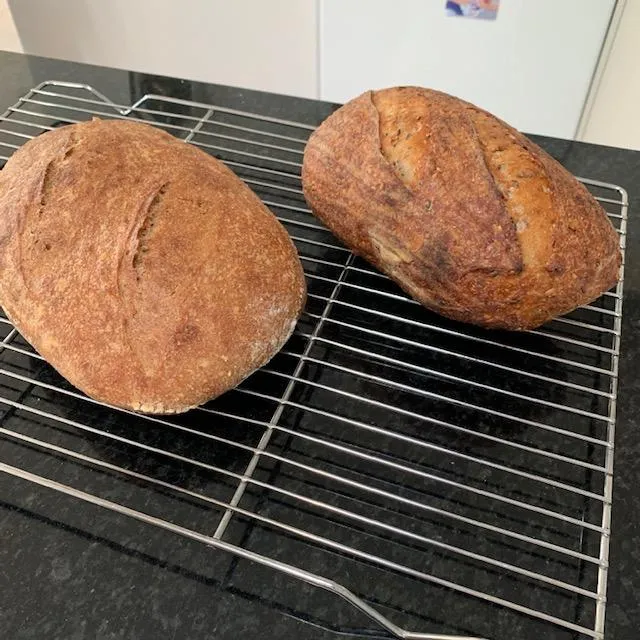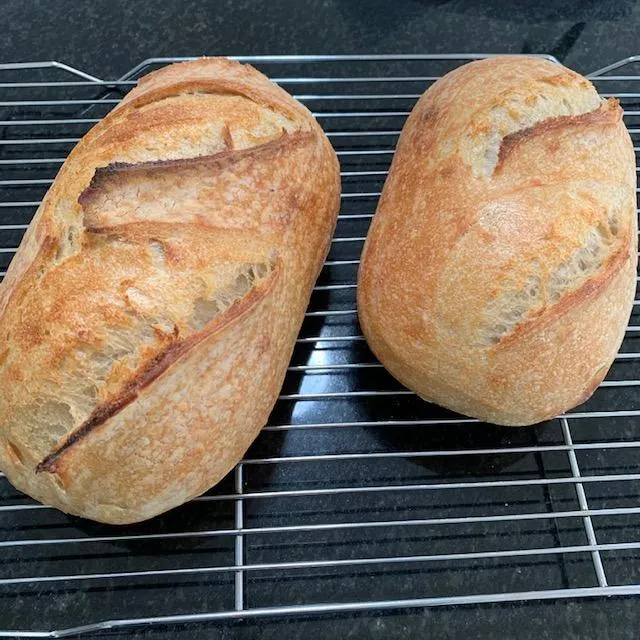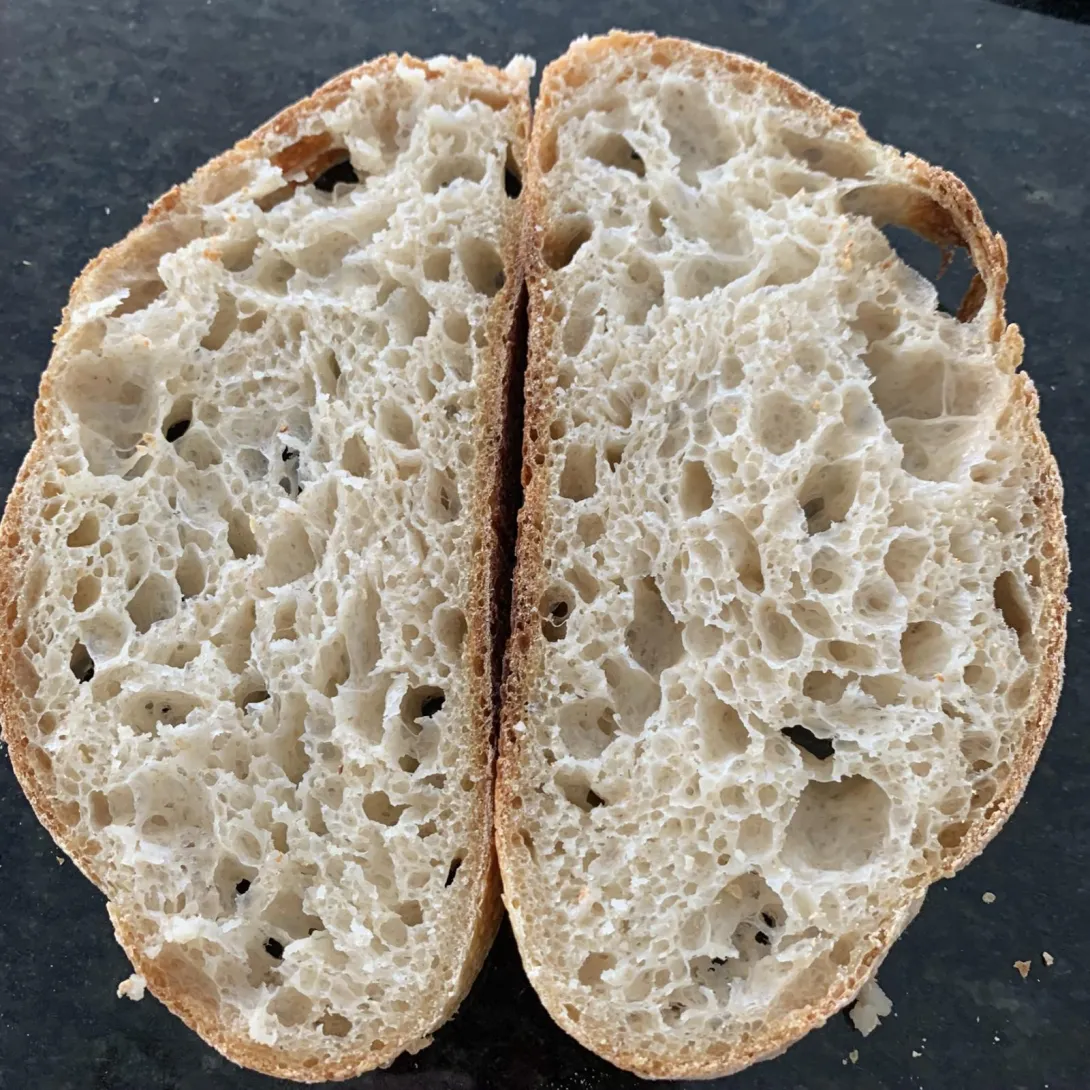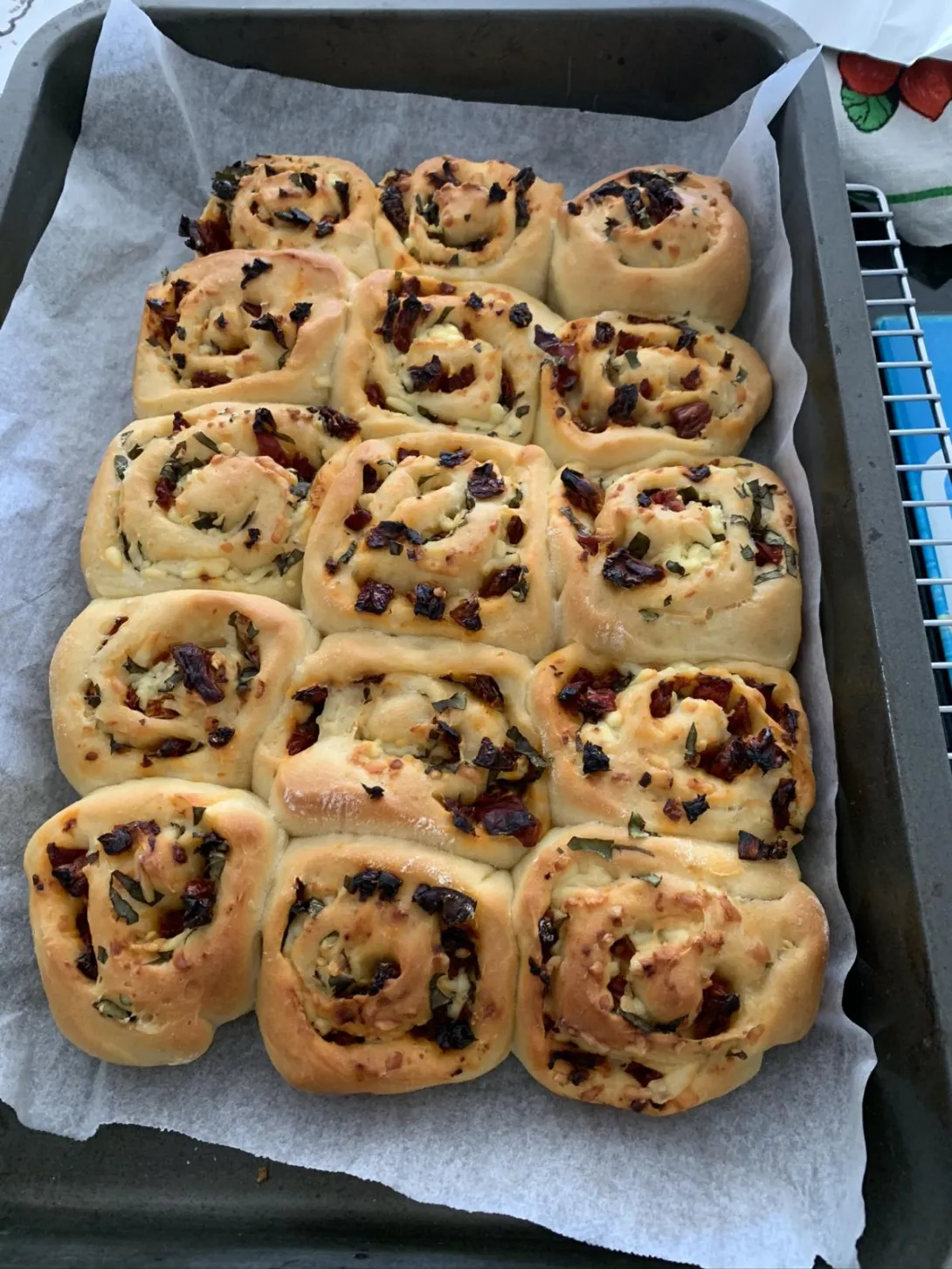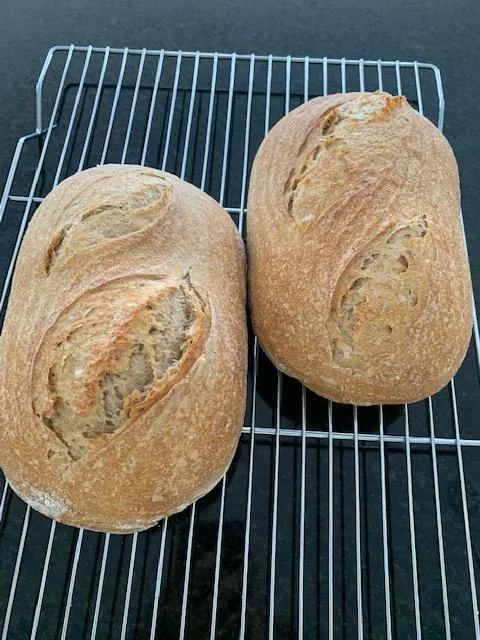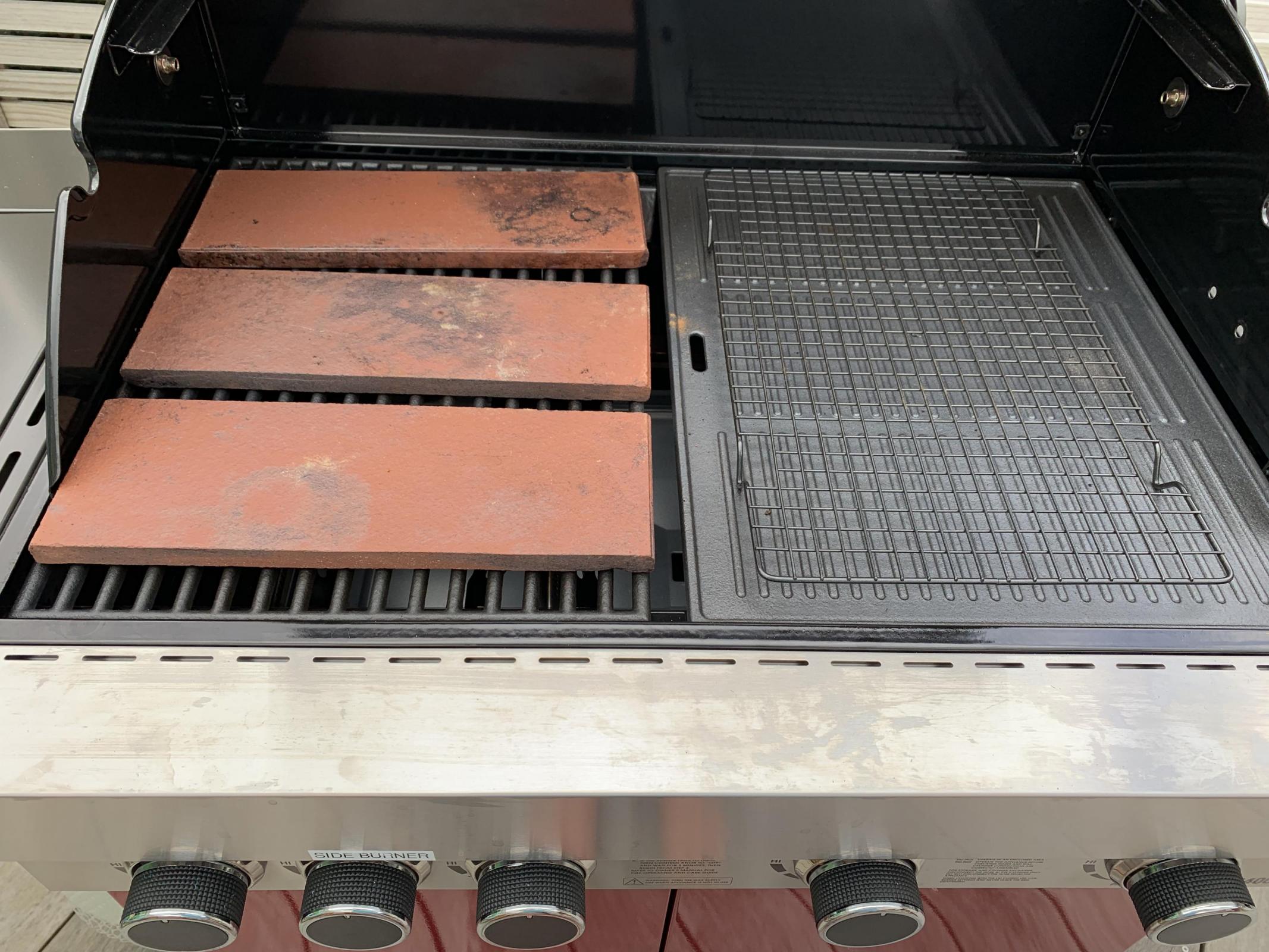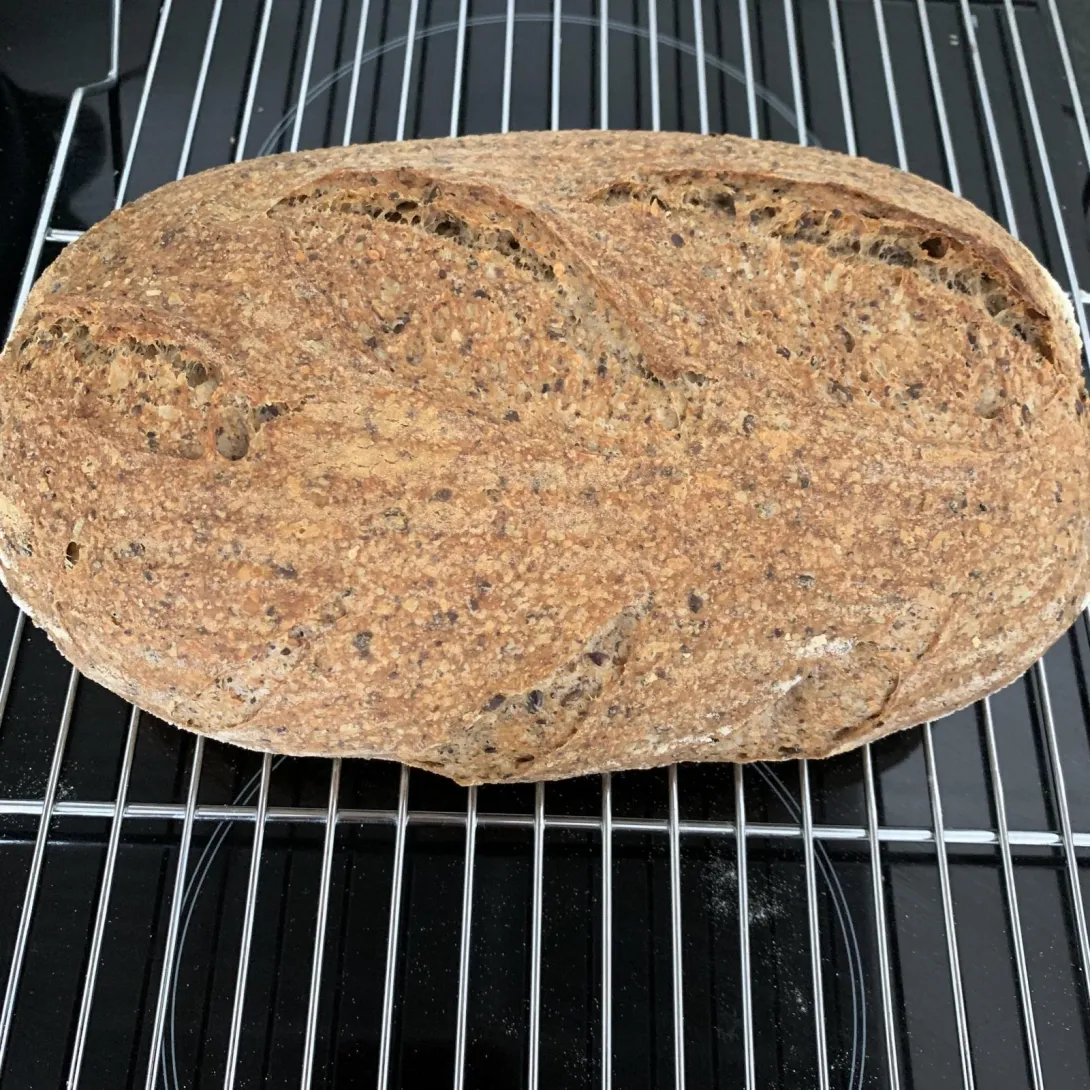First bread bake with my new oven
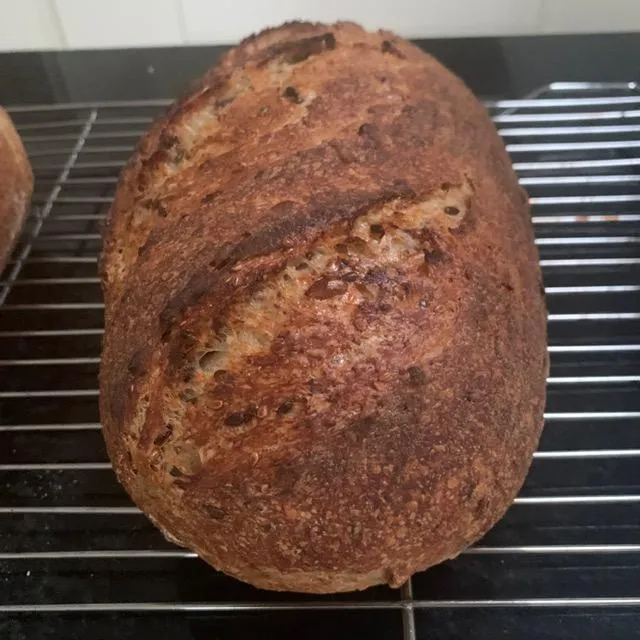
At the end of July I finally gave in to temptation and ordered a new oven. I settled on a 13 Function Bosch (not sure if I will ever use all of them!) and finally a week ago it was installed.
For this bake I just played around with some seeds - didn't want a heavy loaf so it was
Bread flour 80%, Wholewheat flour 15%, rye flour 5%, 80% hydration and salt at 2%. I adjusted the flour to include 0.05% diastatic malt. To this I added
Chia seed 4%, sesame seed 5%, flaxseed 5% sunflower seed 5% and pumpkin seed 5%.
Method:
